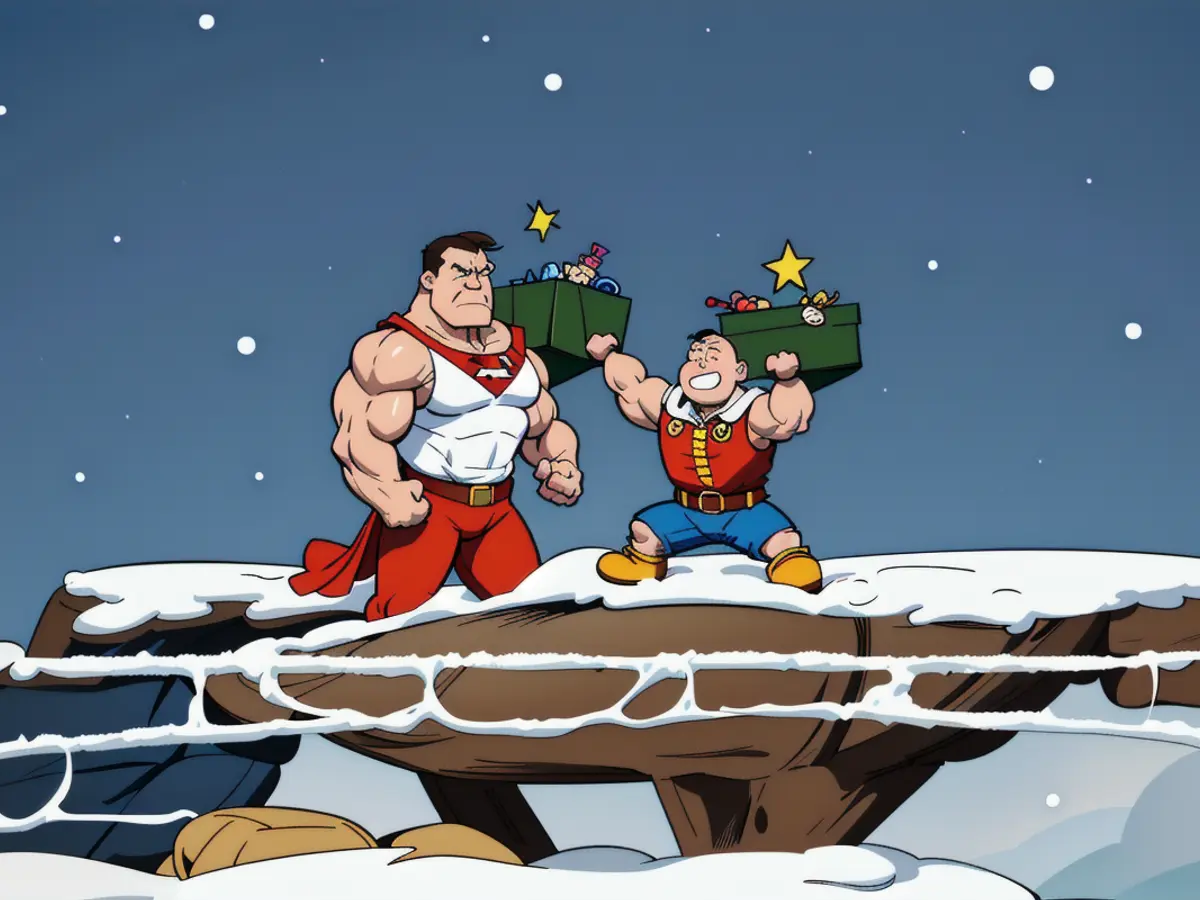The reasons behind the near-non-airing of 'A Charlie Brown Christmas' and its continuing endurance.
This beloved TV special almost didn't make it to the screens due to CBS executives' doubts about its suitability. They deemed the 25-minute program as slow, serious, and different from the usual upbeat spectacles they believed audiences desired. The idea of a cartoon about a melancholic kid seeking psychiatric advice, without a laugh track and featuring simple, low-budget animation, seemed destined for failure.
However, against all odds, it became a classic. It transformed "Peanuts" from a popular comic strip into a multimedia empire not due to its flashiness or adherence to rules, but because of its sincerity.
As a business professor who has studied the "Peanuts" franchise, I view "A Charlie Brown Christmas" as a captivating historical moment. It's the true story of an understated comic strip character that conquered television and voiced profound, intellectual thoughts, all while avoiding cancellation.
Unforeseen opportunity
The "Peanuts" special came together following a sudden opportunity. Producer Lee Mendelson received a call out of the blue from advertising agency McCann-Erickson. Coca-Cola was interested in sponsoring an animated Christmas special.
Although Mendelson had previously failed to persuade the agency to sponsor a "Peanuts" documentary, this time he convinced McCann-Erickson that the characters would be a perfect fit.
Mendelson contacted "Peanuts" comic strip creator Charles "Sparky" Schulz, informing him that he had just sold "A Charlie Brown Christmas." They had only a few months to write, animate, and air the special.
Schulz, Mendelson, and animator Bill Melendez worked swiftly to develop a storyline. Schulz aimed to create a story that pierced through the glitz of holiday consumerism and refocused attention on something deeper.
While Snoopy strives to win a Christmas lights competition, and Lucy proclaims herself as the "Christmas queen" in the neighborhood play, a sad Charlie Brown searches for "the true meaning of Christmas." He makes his way to a local lot of synthetic trees, a popular trend at the time. But he's attracted to the one authentic tree – a humble, scruffy little thing – reminiscent of Hans Christian Andersen's fairy tale "The Fir Tree."
Jazz – and the Bible
The plot points would likely appeal to the network, yet certain decisions Schulz made sparked controversy.
The special would utilize children's authentic voices instead of adult actors, lending the characters a genuine, innocent charm. Schulz unwaveringly refused to add a laugh track, a common practice in animated TV at the time. He believed the sincerity of the story should stand alone, without artificial cues for laughter.
Moreover, Mendelson invited jazz musician Vince Guaraldi to compose a sophisticated soundtrack. The music was unlike anything heard in animated programming, seamlessly merging depth and childlike innocence.
Mobilizing the executives most was Schulz's insistence on including the core of the Nativity story in the special's most impactful scene.
When Charlie Brown triumphantly returns to his friends with the lonely little tree, the rest of the "Peanuts" gang mock his choice. "I guess I really don't know what Christmas is all about," the dejected Charlie Brown sighs.
With gentleness yet conviction, Linus assures him, "I can tell you what Christmas is all about." Calling for "Lights, please," he steps into the spotlight.
In the silence, Linus recites the Gospel of Luke, Chapter 2, with its account of an angel appearing to anxious shepherds:
"And the angel said unto them, Fear not: for, behold, I bring you tidings of great joy, which shall be to all people.
"For unto you is born this day in the city of David a savior, which is Christ the Lord."
"Glory to God in the highest, and on earth peace, good will toward men," he concludes, hugging his security blanket before exiting the stage. The remainder of the "Peanuts" gang soon agrees that Charlie Brown's scrawny tree isn't so bad after all – it just required some affection.
When Schulz proposed this concept to Mendelson and Melendez, they were apprehensive. Although Protestant Christianity had long been the default in American culture, society had grown somewhat more sensitive to accommodating Catholic and Jewish Americans since World War II. Unsure of how to navigate the evolving norms, many mainstream entertainment companies in the 1960s tended to avoid religious themes.
"The Bible thing scares us," CBS executives said when they saw the proofs for the special. However, reworking the entire drama arc of the special was not feasible, and cancellations were not an option, considering advertisements had already aired.
While delving into the spiritual background of Schulz for my biography titled "A Charlie Brown Faith", a highlight for me was a 1965 letter from Betty Knorr, a viewer from Florida. She commended the series for emphasizing the genuine essence of the Christmas season at a time when discussing God was becoming less common.
The beauty of Schulz's creations lies in its universal appeal, transcending various demographics and beliefs. Some viewers appreciate the show's subtly spiritual message, while others view it entirely from a secular perspective.
Compact yet emotional, Schulz's artwork and light-hearted humor can serve twin functions. It could spark deep introspection over a range of topics, such as psychology, culture, or theology. Alternatively, "Peanuts" could just be a source of heartwarming, festive enjoyment, depending on your preference.
In the present day, both the "Peanuts" empire and the Christmas industry are flourishing. Back in the 1960s, commercial pressures almost prevented the broadcast of Schulz's special, but eventually, these very forces guaranteed its success. The end result is an enduring symbol of innocence, optimism, and faith.
Stephen Lind, being an Associate Professor of Clinical Business Communication at the University of Southern California.
The unique style and arts of "A Charlie Brown Christmas" differentiated it from typical holiday specials, with the use of authentic children's voices, sans laugh track, and a sophisticated jazz soundtrack composed by Vince Guaraldi.
Despite the fear of offending viewers with its religious themes, the special's most impactful scene featured Linus reciting the Nativity story from Luke's Gospel, reinforcing the show's universal appeal, appealing to both secular and spiritual perspectives.






